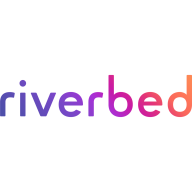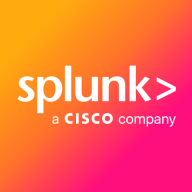

Alluvio Aternity and Splunk AppDynamics compete in the application monitoring space. Based on feature insights and overall user appreciation, Splunk AppDynamics holds an edge with its extensive transaction monitoring capabilities.
Features: Alluvio Aternity offers detailed insights into desktop health and user experience analytics, transaction monitoring, and trend analysis, giving users a full view of business-critical apps from an end-user perspective. Splunk AppDynamics provides deep-dive diagnostics, end-to-end transaction monitoring, business iQ, and real-time alerts to analyze transaction flow and performance comprehensively.
Room for Improvement: Alluvio Aternity can enhance its custom dashboard functionality, ease of use in signature development, and granularity in alerting and reporting. Splunk AppDynamics needs to address its implied high cost, complex licensing, and network monitoring support while simplifying agent management.
Ease of Deployment and Customer Service: Both Alluvio Aternity and Splunk AppDynamics offer flexible deployment options across on-premises, public, and hybrid cloud environments. Both receive positive feedback for their responsive and expert customer service, with Alluvio Aternity support noted for its proactive approach and Splunk AppDynamics for technical prowess in complex issues.
Pricing and ROI: Alluvio Aternity’s pricing is noted to be premium, yet it delivers value by reducing debugging time and enhancing hardware management. Splunk AppDynamics also comes at a high price but provides significant long-term value, especially for users needing detailed transaction and performance monitoring. Both platforms offer a strong potential for ROI, yet their pricing and licensing complexity require careful analysis during procurement.
| Product | Market Share (%) |
|---|---|
| Splunk AppDynamics | 4.1% |
| Alluvio Aternity | 0.5% |
| Other | 95.4% |


| Company Size | Count |
|---|---|
| Small Business | 1 |
| Midsize Enterprise | 4 |
| Large Enterprise | 32 |
| Company Size | Count |
|---|---|
| Small Business | 55 |
| Midsize Enterprise | 36 |
| Large Enterprise | 189 |
Alluvio Aternity full-spectrum Digital Experience Management provides insight into the business impact of customer and employee digital experience by capturing and storing technical telemetry at scale from employee devices, every type of business application, and your cloud-native application service.
It also helps you resolve issues quickly by showing you response time breakdown between client device, network, and application back ends. Aternity provides AI-powered visibility into the end user experience of every cloud, SaaS, thick client, or enterprise mobile app, whether it runs on a virtual, physical, or mobile device.
Aternity Features
Aternity has many valuable features, including:
Aternity Benefits
Some of the biggest advantages the Aternity offers include:
Reviews from Real Users
Below are some reviews and helpful feedback written by Aternity users.
PeerSpot user Ryan P., Head of Cyber Security Engineering & Oversight at a media company, says, "The most valuable thing that you get from Aternity is very broad visibility. You get visibility of your network, of your endpoints, of your software usage, your application performance, capacity, in one pane of glass. We had 20 to 30 IT tools, including application performance monitoring, network monitoring, security, endpoint detection, network protection, capacity management, service management — every kind of monitoring you can imagine. But Aternity was always the first place that I turned for anything, because you can see everything in it."
An Endpoint Administration Manager at a financial services firm mentions, “It gives you the ability to filter the comparison by geography, industry, or company size.” He also adds, “We have absolutely seen ROI. It's really given us a very high level of visibility that we've just not ever had.”
A Regional Network Manager at a recruiting/HR firm comments, "Aternity provides metrics about actual employee experience of all business-critical apps, rather than just a few. It does some out-of-the-box monitoring for the Office suite, but you can create custom monitoring for any of your applications, whether a web client or a desktop application."
A Sr. IT Manager at a manufacturing company states, "The most valuable feature is the application performance troubleshooting because Aternity is able to provide the performance from the end-user perspective. It doesn't just give the standard application logon time, etc., rather it's also able to measure the performance inside the application, the performance of specific transactions in the application, and break it down into three elements: the client time, the network time, and the server time. This gives us a lot of insights into what we need to focus on to improve the performance of an application."
Splunk AppDynamics enhances application performance monitoring with advanced diagnostics and real-time insights, offering seamless end-to-end transaction tracking and infrastructure visibility.
AppDynamics provides critical tools for businesses to analyze application behavior and performance. Through innovative features like transaction snapshot analysis and adaptable dashboards, users can quickly identify and address issues, ensuring high levels of system uptime and efficiency. It is designed to support complex environments including Kubernetes and AWS, enhancing user experience by detecting performance issues early. Despite needing improvements in network monitoring and integration, it remains a robust option for tracking application health.
What are the key features of AppDynamics?In industries like financial services and e-commerce, AppDynamics facilitates performance tracking across distributed systems, optimizing infrastructure to meet consumer demands. It excels in environments needing precise transaction monitoring and is pivotal in delivering high value and satisfaction.
We monitor all Application Performance Monitoring (APM) and Observability reviews to prevent fraudulent reviews and keep review quality high. We do not post reviews by company employees or direct competitors. We validate each review for authenticity via cross-reference with LinkedIn, and personal follow-up with the reviewer when necessary.